 Douglas Manor is a neighborhood in the borough of Queens, part of the Metropolitan area of New York City. It is considered the most adored neighborhood is Douglaston, where twisting, hilly streets, many private, are lined by large houses contained within a peninsula on Little Neck Bay. There are roughly 600 homes in the 188 acre neighborhood.
Douglas Manor is a neighborhood in the borough of Queens, part of the Metropolitan area of New York City. It is considered the most adored neighborhood is Douglaston, where twisting, hilly streets, many private, are lined by large houses contained within a peninsula on Little Neck Bay. There are roughly 600 homes in the 188 acre neighborhood.
As of 2010 census, there were 27,000 people residing in the area for the ZIP code that includes Douglas Manor, and also parts of Douglaston and Little Neck. Its population indicates roughly 70 percent white, 20 percent Asian, 8 percent Hispanic or Latino and 0.4 percent black.
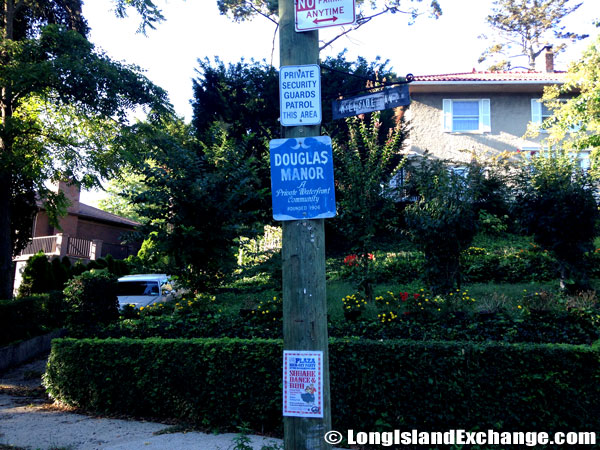 Douglas Manor is considered the most adored neighborhood is Douglaston. There are roughly 600 homes in the 188 acre neighborhood.
Douglas Manor is considered the most adored neighborhood is Douglaston. There are roughly 600 homes in the 188 acre neighborhood.
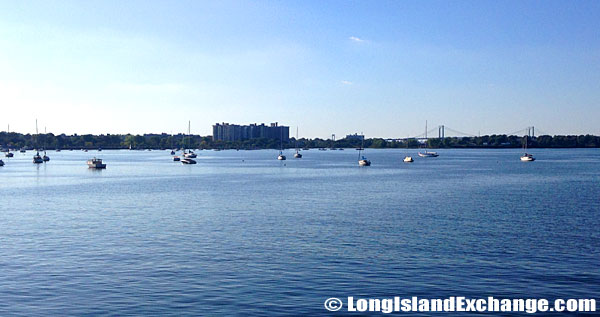 Looking along Shore Road which surrounds the west side of the Douglas Manor peninsula.
Looking along Shore Road which surrounds the west side of the Douglas Manor peninsula.
 The shoreline on the west side of the Douglas Manor peninsula is incredibly popular for various types of fishing.
The shoreline on the west side of the Douglas Manor peninsula is incredibly popular for various types of fishing.
The story begins in the 1700’s when like other parts of Long Island, was originally occupied by Native Americans of the Matinecock tribe, some of whom are buried in the cemetery of Zion Church on Northern Boulevard. The Dutch, who never slow to spot an opportunity, lost no time in sizing up Douglas Manor’s potential when they arrived soon after. They focused on harvesting hay from the shoreline to build cattle body mass, and corn inland for their families. The land yielded in enormous quantities and the precursor of Manhattan was no more than 12 miles across the Sound. Water was the optimal way to reach farm produce to cash-rich urban centers. A new level of prosperity of which the Indians had no concept or desire, added tangible weight to the coffers of European settlers. A new equilibrium was reached.
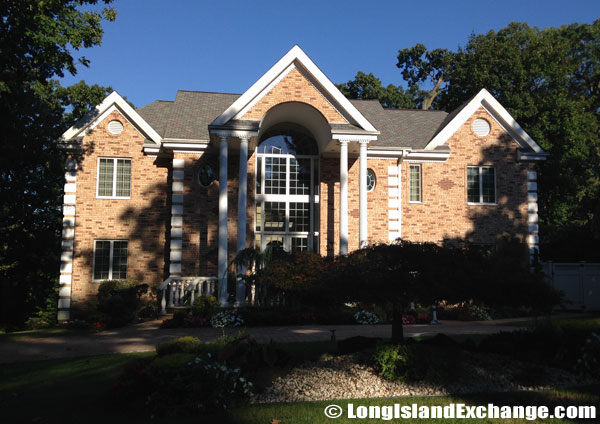 The Douglas Manor Association collects $500 per year in dues from each homeowner.
The Douglas Manor Association collects $500 per year in dues from each homeowner.
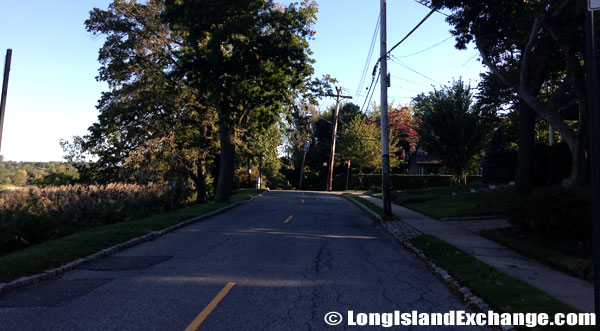 Douglas Manor is considered the most adored neighborhood is Douglaston, where twisting, hilly streets, many private, are lined by large houses contained within a peninsula on Little Neck Bay.
Douglas Manor is considered the most adored neighborhood is Douglaston, where twisting, hilly streets, many private, are lined by large houses contained within a peninsula on Little Neck Bay.
One day in the early 19th century, a rich New Yorker bought land in what was to become Douglas Manor and built a palatial home on it for an extended family, as was the norm in those days. The seeds of suburban residence had been embedded firmly, and pioneering investors with funds to spare began to convert farm land in to residences and resorts. The Van Wyck Farm set a trend for other investors to follow. The establishment of Douglas Manor in its present and named form, started at the dawn of the 20th century, and true to form, has run uninterrupted until now.
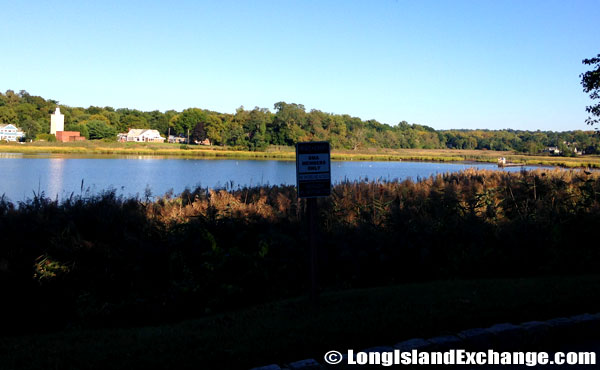 There are roughly 600 homes in the 188 acre neighborhood.
There are roughly 600 homes in the 188 acre neighborhood.
 Douglas Manor is an architectural exposition with outstanding examples of Colonial, homes and other styles.
Douglas Manor is an architectural exposition with outstanding examples of Colonial, homes and other styles.
The 188 acres of Douglas Manor has had a string of achievements. George Douglas bought plants from all over the world to the locality and preserved the trees that had been inherited with the reverence they deserved. William Douglas, born in to the wealth of his father had forged, brought the joys of yachting and polo to the United States and became infamous as the first person to win the greatest sailing race in the world. The Rickert-Finlay Realty Company developed Douglas Manor with rare foresight before the term zoning had been coined. Eight of the roughly 600 homes in Douglas Manor were designed by Josephine Wright Chapman, one of the first women to become a professional architect anywhere in the modern world. Artists and leading lights from the world of films have lived here before World War II, in the hey-days of the The Kaufman Astoria Studios, a historic movie studio in Astoria Queens.
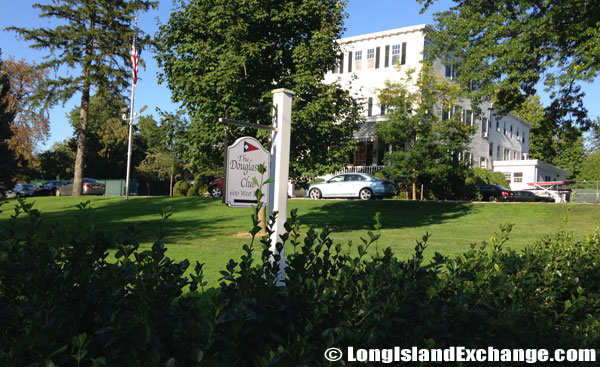 The Douglaston Club, which is housed in a mansion built in circa 1820, home to the then merchant and elected member of a municipal council, Wynant Van Zandt.
The Douglaston Club, which is housed in a mansion built in circa 1820, home to the then merchant and elected member of a municipal council, Wynant Van Zandt.
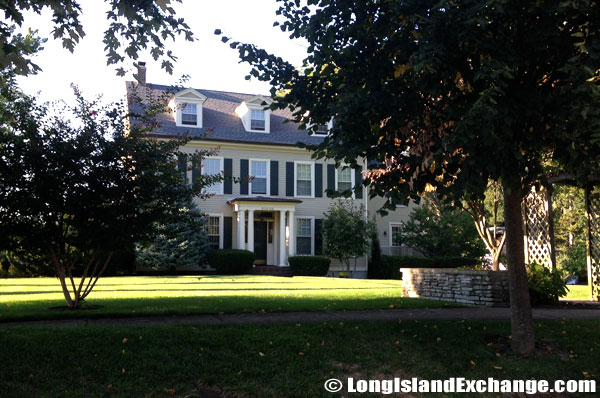 Douglas Manor is an architectural exposition with outstanding examples of Colonial, homes and other styles.
Douglas Manor is an architectural exposition with outstanding examples of Colonial, homes and other styles.
Today, wealthy professionals and business people as well as some upper to middle class folk live in comfort and peace along the shores and specifically, along Shore Road which surrounds the west side of the Douglas Manor peninsula. Many residents belong to the Douglaston Club, which is housed in a mansion built in circa 1820, home to the then merchant and elected member of a municipal council, Wynant Van Zandt. Douglas Manor is an architectural exposition with outstanding examples of Colonial, homes and other styles. The Douglas Manor Association collects $500 per year in dues from each homeowner.




